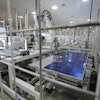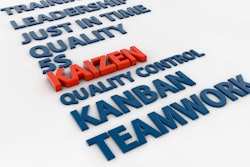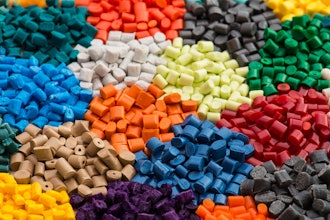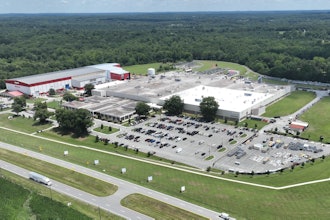In a move to dramatically reduce chlorinated emissions and wastewater generation from its plant, the SAPPI Fine Paper Company of Muskegon, MI eliminated its hypochlorite bleaching process in making the fine heavyweight coated book and magazine papers for which the company is known. Eliminating the process, however, put more strain on the company's alternative CLO 2 bleaching method, which used Xylanase Enzymes in a 6-step procedure, run through a complex closed-loop bleaching tower at high temperatures.
The bleaching tower, in effect, "feeds" two paper-making machines that produce 260,000 tons annually of SAPPI's heavy coated papers. As with any sophisticated piece of machinery, it is essential that the tower operate effectively, day in and day out, with as little unplanned downtime or unanticipated maintenance costs as possible. While conversion to the CLO 2 bleaching process at SAPPI successfully maintained product quality while reducing emissions and wastewater, the bleaching tower itself did not fare as well.
Increased processing temperatures throughout the multistage procedure caused more rapid deterioration of the tower's FRP-lined steel upflow tube. The liner began to de-bond from the steel. Stress corrosion cracking occurred with increasing rapidity. The upper section of the tube eroded from contact with the wood pulp. Unanticipated downtime repairs were mounting and, because the need for production was omnipresent in a time of paper mill consolidation, repair crews were always strained to get the tower up and running again as quickly as possible -- even when nonessential maintenance, and additional time-consuming inspections, had to be compromised for production.
 Viatec, Inc (Hastings, MI), a worldwide manufacturer of custom process storage vessels and piping systems for all manner of chemicals, working in conjunction with Ausimont specialists, developed a solution for SAPPI that had both immediate and -- especially gratifying -- long term results.
Viatec, Inc (Hastings, MI), a worldwide manufacturer of custom process storage vessels and piping systems for all manner of chemicals, working in conjunction with Ausimont specialists, developed a solution for SAPPI that had both immediate and -- especially gratifying -- long term results.
Viatec replaced the trouble-prone FRP-only upflow tube liner with a combination dual laminate liner made from Halar® ECTFE bonded to a new FRP structure. This custom engineered solution proved a less costly alternative to the use of exotic metal or alloy liners in corrosive vessel conditions.
"The Halar ECTFE lining gave SAPPI the high temperature resistance, chemical resistance and smoothness to withstand chlorine bleaching on a daily basis, month in and month out," says Dale Keeler, P.E., director of engineering for Viatec. "Frankly, we all expected this. What was somewhat unexpected," he relates, "was when we came back to make a visual inspection of the upflow tube a full two years after the new liner was installed -- and after the bleaching tower had been in constant operation."
What engineers from Viatec and Ausimont found was that the tops of the upflow tube (and the downflow tube, also Halar ECTFE lined) were in pristine condition. The surface was glossy and transparent: no corrosion, erosion, leaks, or even discoloration were seen by the engineers. Fully another year later, now three years after the liner was installed, the same engineers had another opportunity to inspect SAPPI's upflow tube. Again, they were able to report that both tube and its liner were still in excellent condition.
For its part, SAPPI reports that it has been able to increase production output from the bleaching tower 15% and actually increase the brightness of its papers by 2% to a new high. The payback period for the new dual laminate tube liner, including materials and labor? That was passed long ago -- a mere one month at present pulp prices.




















